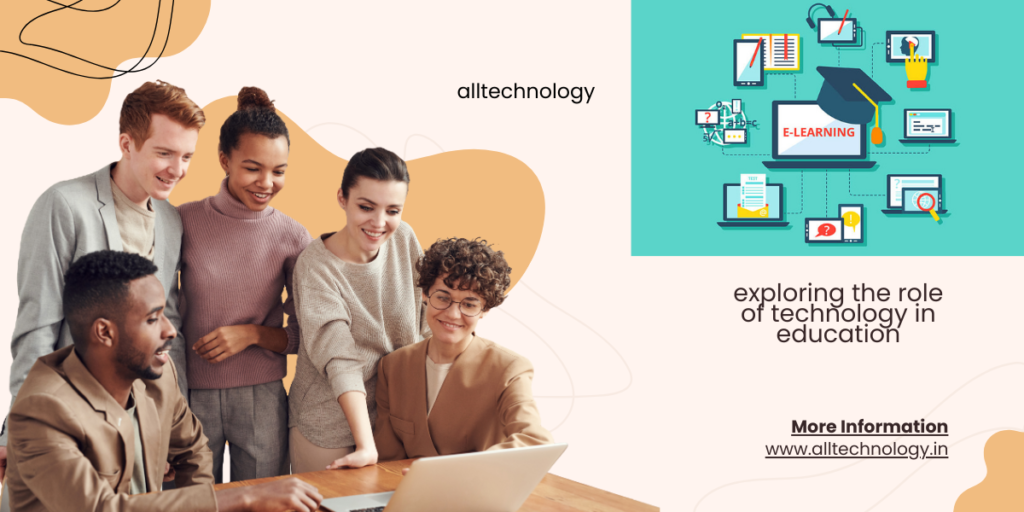Introduction
Hello Bloggers welcome alltechnology blog. In this blog you will learn Exploring the Role of Technology in Education. In the dynamic landscape of modern education, the infusion of technology has sparked a revolution, reshaping traditional paradigms and propelling us into an era of unprecedented possibilities. As we embark on this transformative journey, it becomes imperative to unravel the intricate tapestry that intertwines the realms of education and technology. Two pivotal factors, “perplexity” and “burstiness,” emerge as guiding beacons in our exploration, illuminating the path towards a richer, more nuanced understanding.

Unraveling Perplexity: Deciphering the Complexity of Text
At the heart of educational discourse lies the concept of perplexity, a nuanced measure of textual intricacy. As educators strive to engage learners with rich and challenging content, the complexity of the text becomes a critical consideration. With the aid of technology, educators can curate a diverse array of resources, ranging from scholarly articles to multimedia presentations, each contributing to the tapestry of knowledge in its own unique way.
However, the pursuit of perplexity is not without its challenges. Balancing the need for depth and accessibility requires a delicate dance between sophistication and clarity. In the digital realm, algorithms and natural language processing tools offer invaluable assistance, analyzing text complexity and guiding educators in their quest to strike the perfect balance.
In the vast ocean of educational content, burstiness emerges as a beacon of diversity, illuminating the dynamic interplay between sentence structures and lengths. Unlike the rigid uniformity often found in AI-generated text, human communication thrives on the ebb and flow of linguistic expression. Educators craft their messages with precision, weaving together intricate sentences with shorter, punchier phrases to captivate their audience.
Yet, achieving burstiness in digital environments presents a formidable challenge. As automated systems churn out text with mechanical efficiency, the artistry of linguistic variation risks being lost in the algorithmic shuffle. To counter this trend, educators must harness the power of technology as a tool for augmentation rather than automation, leveraging digital resources to enhance their own creative expression.
The Confluence of Perplexity and Burstiness: Charting New Frontiers in Education
In the symbiotic relationship between perplexity and burstiness lies the promise of educational innovation. By embracing the complexity of text and the diversity of expression, educators can create immersive learning experiences that resonate with learners on a profound level. Technology serves as both a catalyst and a canvas, empowering educators to push the boundaries of traditional pedagogy and explore new horizons of possibility.
Role of Education:
At the heart of this discourse lies the timeless essence of education, a cornerstone of human civilization since antiquity. Education, in its myriad forms, transcends the confines of classrooms, extending its reach into the fabric of society, shaping minds, and shaping futures. It embodies the collective wisdom of generations past, a beacon of enlightenment amidst the ever-shifting tides of change.
Yet, as we stand on the precipice of a digital age, the role of education undergoes a metamorphosis, evolving to meet the demands of a rapidly evolving world. No longer confined to the confines of brick-and-mortar institutions, education unfurls its wings in the boundless expanse of cyberspace, embracing the democratizing power of technology.
Conceptual Details:
In our quest to unravel the enigma of education in the digital age, we confront the dichotomy of perplexity and burstiness. Perplexity, with its nuanced intricacies, compels us to probe beneath the surface, unraveling the labyrinthine complexities that underpin educational discourse. It challenges us to transcend the realm of rote memorization, fostering critical thinking and intellectual curiosity.
Meanwhile, burstiness injects dynamism into our narrative, mirroring the pulsating rhythm of human expression. From the lyrical cadence of prose to the staccato beats of scholarly analysis, each sentence becomes a brushstroke on the canvas of knowledge, painting a vivid portrait of educational diversity.
